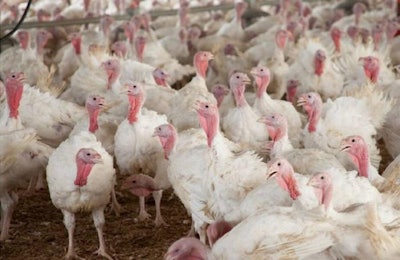
Production by Morocco’s poultry industry in the first few months of 2016 was good but a slowdown is expected for the second half of the year as a result of avian influenza. That was the assessment of the current state of the sector given at SIAM - the International Exhibition of Agriculture in Morocco – in Meknes last month by Chaouki Jerrari, director of the country’s Interprofessional Federation for the Poultry Sector (FISA).
According to the report in L'Usine Nouvelle, FISArepresents the entire brooding and poultry sector in Morocco, which generates MAD28 billion (US$2.9 billion) annually or around 3 percent of Gross Domestic Product (GDP).
Impact of avian influenza
“As a result of avian influenza, mortality among breeding birds has risen from 5 percent to 15-30 percent,” said Jerrari. “The virus itself is only weakly pathogenic but if the birds are not properly vaccinated against other diseases, the effect is amplified.”
Production started to fall in the third week of April and is expected to continue until late May. If there are no more outbreaks and output recovers to 70-80 percent of previous levels, poultry meat supplies will meet demand, he said.
Avian influenza came at a bad time for the industry, following a period of drought that raised the cost of straw for bedding and caused all meat prices to fall as cattle had to be slaughtered.
Moroccan World News reported a month ago the agriculture minister, Aziz Akhannouch, saying that the poultry sector had overcome the H9N2 avian influenza virus through vaccination and had returned to self-sufficiency in the production of meat and eggs.
Recovery anticipated
In the short term, Jerrari told Usine Nouvelle that he expects the poultry sector to recover by the beginning of Ramadan. During this period of fasting, egg consumption increases, while that of chicken meat falls.
“In 2015, we sold 520,000 metric tons (mt) of broiler meat and 90,000mt of turkey,” said Jerrari. “The turkey sector is less dynamic than before but the trend is still upwards for broilers the trend is still to the up. We are not lagging behind the targets set in the 2011-2020 program contract between professionals and public authorities.”
Usine Nouvelle’s report says the numbers tell another story. With a total production of poultry meat in Morocco 610 000 mt in 2015, the sector is some way from the program’s target, which was to raise output from the 2010 figure of 560,000 mt to 900,000 mt in 2020.
Local companies have invested to increase productivity, including market leader, Zalar Holding (previously Zalagh Holding), which invested MAD396.5 million (US$4.1 million) between 2014 and 2016. Its subsidiaries and Couvnord Atlas Hatcheries currently have a capacity of 3 million turkey poults and 55 million broiler chicks per year. The company is reported to be heavily in debt and to have announced losses for 2014 and 2015.
One bright spot for the Moroccan poultry sector is exports to Africa, which started in 2010 and grew to 15-16 million birds last year. Destinations include Mauritania, Mali, Burkina Faso, Senegal and Ivory Coast.
According to its web site, Zalar Holding is a major player in poultry and food sectors in Morocco with more than a dozen subsidiaries operating in various sectors across the country. It was the first fully integrated poultry group in the country and is engaged in the import and storage of raw materials, production of animal feed and hatching eggs, turkey hatching, rearing and slaughter, poultry meat processing and African Development.
Moroccan output of chicken meat was almost 636,000 mt in 2013 – the last year for which data have been published - according to FAOstat. This represents a rising trend from 467,000 mt in 2008.
Commercial turkey meat production began to take off in the country in 2006 and FAO estimates output in 2013 was 36,530 mt. According to FISA, there were 689 registered turkey farms in Morocco in 2014 and turkey meat output stood at 78,000 mt.

















